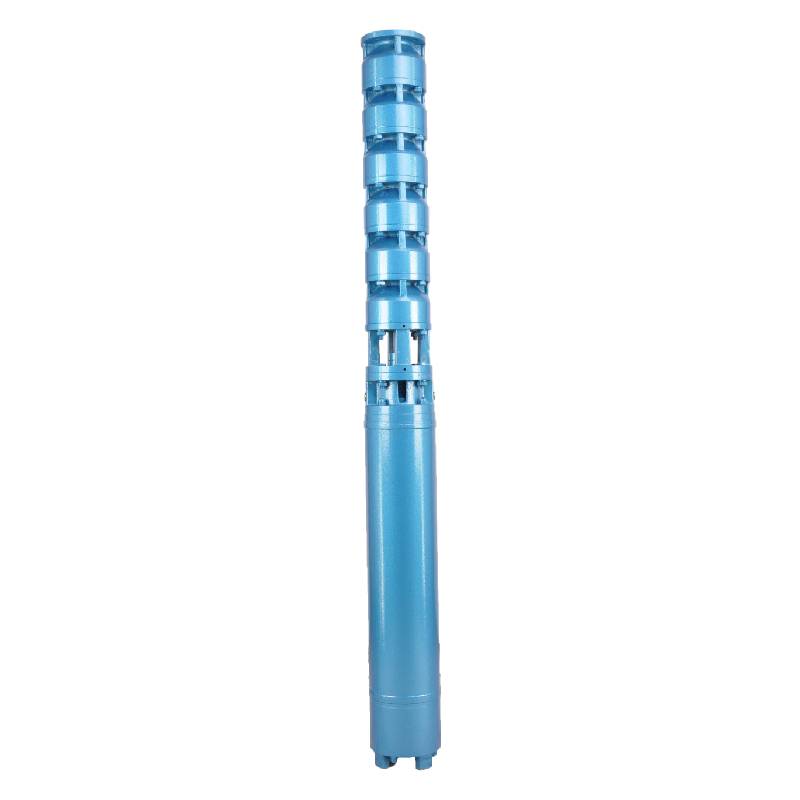Nov . 19, 2024 06:30 Back to list
installing a submersible pump
Installing a Submersible Pump A Comprehensive Guide
Submersible pumps are renowned for their efficiency and reliability in moving water from depths where traditional pumps may struggle. Designed to work underwater, these pumps are often utilized in a variety of applications, including residential, agricultural, and industrial settings. Whether you are looking to drain a flooded basement, irrigate your garden, or maintain a well, installing a submersible pump is an essential skill. In this article, we will discuss the steps and considerations involved in installing a submersible pump effectively.
Understanding Submersible Pumps
Before diving into the installation process, it's crucial to understand how submersible pumps work. These devices are hermetically sealed and designed to operate while submerged in the fluid they are pumping. The motor is coupled to the pump body, allowing it to push water to the surface through a discharge pipe. Submersible pumps are favored for their ability to handle large volumes of water, efficiency in operation, and minimal noise production.
Materials Needed
To install a submersible pump, you will need the following tools and materials
- Submersible pump - Discharge pipe and fittings - Electrical wiring (if applicable) - PVC cement (for sealing pipes) - Hose clamps - Safety goggles and gloves - Shovel (for digging) - Well casing (if applicable) - Circuit breaker protection
Step-by-Step Installation
1. Choose the Right Pump Selecting the correct pump is crucial for a successful installation. Consider the depth of the water source, the required flow rate, and the type of fluid being pumped. Check the manufacturer's specifications for the right model.
2. Assess the Installation Site Before you start, examine the area where the pump will be installed. If it's a well, ensure that the well casing is intact. For drainage, identify a suitable location that allows for efficient water flow.
installing a submersible pump

3. Prepare the Site If you are installing the pump in a well, you may need to dig down to the water level. Make sure the site is clear of debris and that there's enough space for the pump and discharge line.
4. Install the Pump - If you're using a well, lower the submersible pump into the casing carefully using a lifting rope. The pump should be at least a few feet above the bottom to avoid sediment ingestion. - For other applications, place the pump directly into the water source.
5. Connect the Discharge Pipe Attach the discharge pipe to the pump's outlet. Ensure all connections are secure and use PVC cement where necessary to avoid leaks. If the pump is submerged, ensure the pipe extends above the water surface.
6. Wiring the Pump - If the submersible pump requires electricity, follow the manufacturer’s wiring instructions. Consult a licensed electrician if you are unsure about any electrical connections. - Ensure that all electrical connections are waterproofed and that the pump is connected to a Ground Fault Circuit Interrupter (GFCI) for safety.
7. Testing the Pump Once everything is installed, it’s time to test the pump. Turn it on and monitor its operation. Check for leaks in the discharge pipe and ensure that water is being pumped correctly. Make adjustments as needed.
8. Regular Maintenance After installation, regular maintenance is necessary to keep your submersible pump functioning efficiently. Clean any debris or sediment from around the pump, inspect electrical connections, and check the discharge system for clogs or leaks.
Safety Precautions
Installing a submersible pump involves working with heavy equipment and electrical components. Always prioritize safety by wearing protective gloves and goggles. If working with electricity, ensure the power is off before making any connections. Consider hiring a professional if you are unfamiliar with electrical work or pump installation.
Conclusion
Installing a submersible pump may seem daunting, but with the right preparation and knowledge, it can be a straightforward process. By following the outlined steps and understanding the basics of pump operation, you can ensure a successful installation. Remember to choose the appropriate pump for your needs, prepare your site properly, and conduct routine maintenance thereafter. With these practices, your submersible pump will serve you well for years to come.
-
Submersible Water Pump: The Efficient 'Power Pioneer' of the Underwater World
NewsJul.01,2025
-
Submersible Pond Pump: The Hidden Guardian of Water Landscape Ecology
NewsJul.01,2025
-
Stainless Well Pump: A Reliable and Durable Pumping Main Force
NewsJul.01,2025
-
Stainless Steel Submersible Pump: An Efficient and Versatile Tool for Underwater Operations
NewsJul.01,2025
-
Deep Well Submersible Pump: An Efficient 'Sucker' of Groundwater Sources
NewsJul.01,2025
-
Deep Water Well Pump: An Efficient 'Sucker' of Groundwater Sources
NewsJul.01,2025
-
 Submersible Water Pump: The Efficient 'Power Pioneer' of the Underwater WorldIn the field of hydraulic equipment, the Submersible Water Pump has become the core equipment for underwater operations and water resource transportation due to its unique design and excellent performance.Detail
Submersible Water Pump: The Efficient 'Power Pioneer' of the Underwater WorldIn the field of hydraulic equipment, the Submersible Water Pump has become the core equipment for underwater operations and water resource transportation due to its unique design and excellent performance.Detail -
 Submersible Pond Pump: The Hidden Guardian of Water Landscape EcologyIn courtyard landscapes, ecological ponds, and even small-scale water conservancy projects, there is a silent yet indispensable equipment - the Submersible Pond Pump.Detail
Submersible Pond Pump: The Hidden Guardian of Water Landscape EcologyIn courtyard landscapes, ecological ponds, and even small-scale water conservancy projects, there is a silent yet indispensable equipment - the Submersible Pond Pump.Detail -
 Stainless Well Pump: A Reliable and Durable Pumping Main ForceIn the field of water resource transportation, Stainless Well Pump has become the core equipment for various pumping scenarios with its excellent performance and reliable quality.Detail
Stainless Well Pump: A Reliable and Durable Pumping Main ForceIn the field of water resource transportation, Stainless Well Pump has become the core equipment for various pumping scenarios with its excellent performance and reliable quality.Detail
